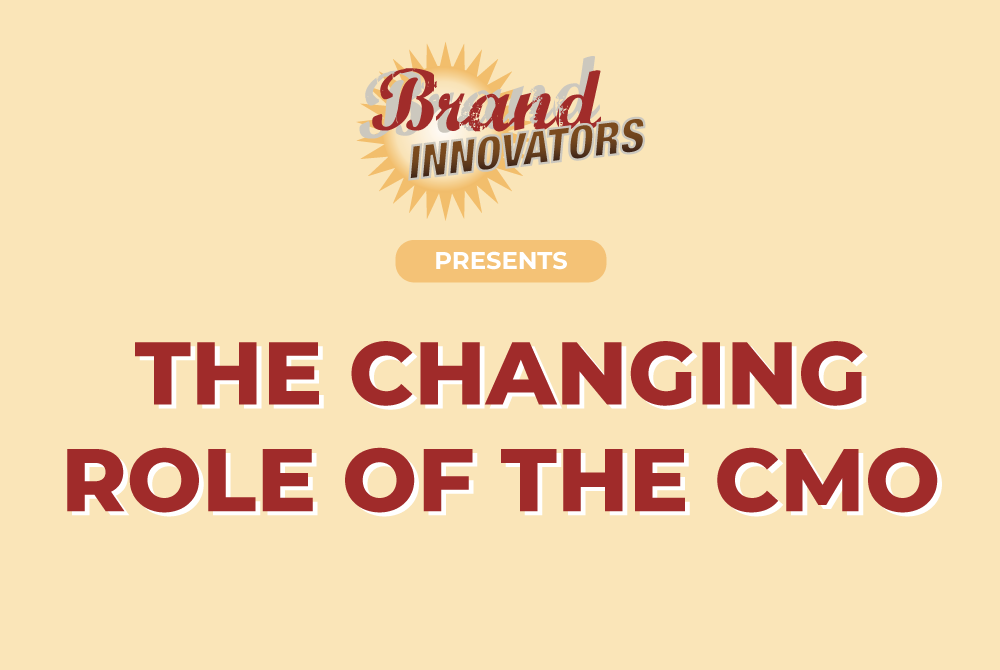The CMO role was created in the early 90s as an evolution to brand management. The primary role from the start was to oversee, protect and develop the brand and there was always a limited means of measuring what that meant and that remains today. However in an era of advanced technology and vast amounts of data, that inability to measure has become more problematic for CMOs. Indeed, the average tenure of CMOs have reached historic lows. By some measures, on average as low as 18 months and in some cases, the role has been eliminated outright, replaced by roles such as chief growth, digital or experience officer.
Brand Innovators Chief Content Officer David Teicher sat down with some industry CMOs to gain insight on what’s driving this shortened lifespan and what can be done to course correct. The following provides an executive summary of some of the common themes that arose in the conversations and what CMOs can do to turn the tide.
There is a lack of understanding in the C-Suite on the Importance of “Brand”
CMOs are under a lot of pressure driven by short term performance needs by both management and the external market. Short-term business goals are often prioritized at the expense of the long-term value of Brand driven work. The CEO, CFO and shareholders want to see results quickly, and most other functions within a company can measure their performance more easily than marketing. The CMO is responsible for the brand and for most companies, whether the C-suite knows it or not, the strength of the brand is critical for long term success. However, “brand-driven work doesn’t generate results overnight. It is something that you have to feed, and foster, and build, and nurture and take great care of. And to take it to the next level, you have to really live and breathe it.” Unfortunately, the results of that can’t always be seen in 18 months.
CMOs Are Often on the Outside Looking in Within the C-Suite
When things go awry, either macroeconomically or just from a category standpoint, the blame game begins and that’s when management starts looking for scapegoats. Relationships become critical at this point, and often, the rest of the C-Suite spend more time with one other than the CMO typically does. The nature of the CMO’s job is to spend more time externally, with partners, consumers, suppliers, etc… So often, the CMOs do not have the strongest relationships with their CEO and their CFO. This is typically a recipe for disaster during this kind of period, and consequently, the CMO is often the first one to get clipped.
CMOs Have to Evolve and Accelerate Their Skill Sets
Many CMOs were brought up on the qualitative side of business making them well versed in consumer psychology, design, big ideas, etc. …which traditionally were the critical elements to being a great marketer. But today, technology and data are every bit, or in some cases, more important than any of those things. So, a lot of long-time marketers are finding themselves out of their element.
You Can’t Treasure What You Can’t Measure
CEO’s ask each of the leadership team for proof of their performance. You might be able to show some performance marketing figures, but brand results are much more difficult to establish and show ROI for. So, if the CEO doesn’t have a good understanding of, or a background in marketing, he’s apt to see the CMO as underperforming.
Dramatic Changes in Marketing
All functions have seen some changes over the last decade or so, but probably none more so than the marketing function. While CMOs’ biggest responsibility in the past might have been advertising, promotion, etc… Today, they’re expected to grow the business, build the brand, modernize and automate the tools, provide a great omnichannel customer experience, lead large teams, and still be a creative brilliant marketer who’s got big expansive ideas. So, the expectations and responsibilities of what a CMO is supposed to do has shifted more than any other c-suite role.
What CMOs should do now:
- Speak the language of the business: Marketers often talk the language of brand or advertising, but it’s critical that they speak the language of the business. Talking about brand attributes or “engagement rates” won’t impress the CFO if the business isn’t doing well. CMOs have to train themselves not just in understanding conceptually what the business is, but to understand exactly how the business makes money, and then align with the CFO about what marketing can do to support the company’s financial goals.
- Get alignment upfront from the rest of the C-Suite on what you will and won’t be responsible for. Help them understand how all the things you’re working on come together and fulfill both the short- and longer-term goals of the company.
- Push the marketing trade associations like the ANA, to start doing outreach to CEOs and CFOs and educate them on what marketing is and how critical it is for the long-term health and future of their company. They should demonstrate how great marketing has and is driving other businesses.
- Build modern skills and be in lock step with the CTO/CIO of the company. A CMO today must be able to drive efficiencies through automation internally and be able to have the data and tech stacks in place to drive personalization for consumers. CMOs should build their skills, but that alone won’t help them accomplish what they need to. They must have the support/partnership of the tech leads in the company and/or have a senior marketing technology lead on their leadership team.
- CMOs must have accountability for both “sales overnight and brand overtime.” While cultivating and growing their brands are critical, they need to make sure they are holding themselves accountable to the business as well. They must allow for both things: growing sales and nurture the brand. It is also equally as important, to ensure they are appropriately managing that dual narrative, with their leadership team and peers. They need to make sure the c-suite understands that all of this will take longer than 18 months.




